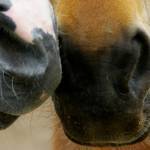Glanders: Infectious Threat to Horses

Though not a threat in some major horse-producing countries, including the United States, worldwide cases of the equine infectious disease known as glanders are on the rise.
Caused by the bacterium Burkholderia mallei (formerly Pseudomonas mallei), glanders is one of the oldest diseases of the horse and at one time was pervasive in multiple continents, including Europe, Asia, and Africa. Eradication methods and heightened veterinary surveillance nearly eliminated the disease in well-developed regions. The disease, sometimes referred to as farcy, still occurs in parts of Africa, Asia, Russia, and South America. The bacterium is commonly found in soil and water.
Of particular note, a horse previously stabled at the Deodoro Olympic Horse Park in Rio de Janeiro was recently positively diagnosed with glanders, reigniting interest in the disease. This venue is set to play host to equestrian events at the 2016 Olympic Games.
Infections without clinical signs, called subclinical cases, are more common than overt infections, which are characterized by fever and respiratory compromise, including bronchopneumonia and nasal excretions. Acute infections are often typified by development of subcutaneous nodules that often progress to ulcerative lesions that drain a viscous pus. Respiratory infection and distress in horses with acute infection usually causes death.
Glanders is spread from horse to horse by nasal secretions, so shared water buckets, feed bunks, and other equipment are responsible for disease spread as is aerosolization. The incubation period is 1-14 days.
Burkholderia mallei is highly infectious for humans, who may become infected by handling or treating diseased animals or during laboratory procedures.








